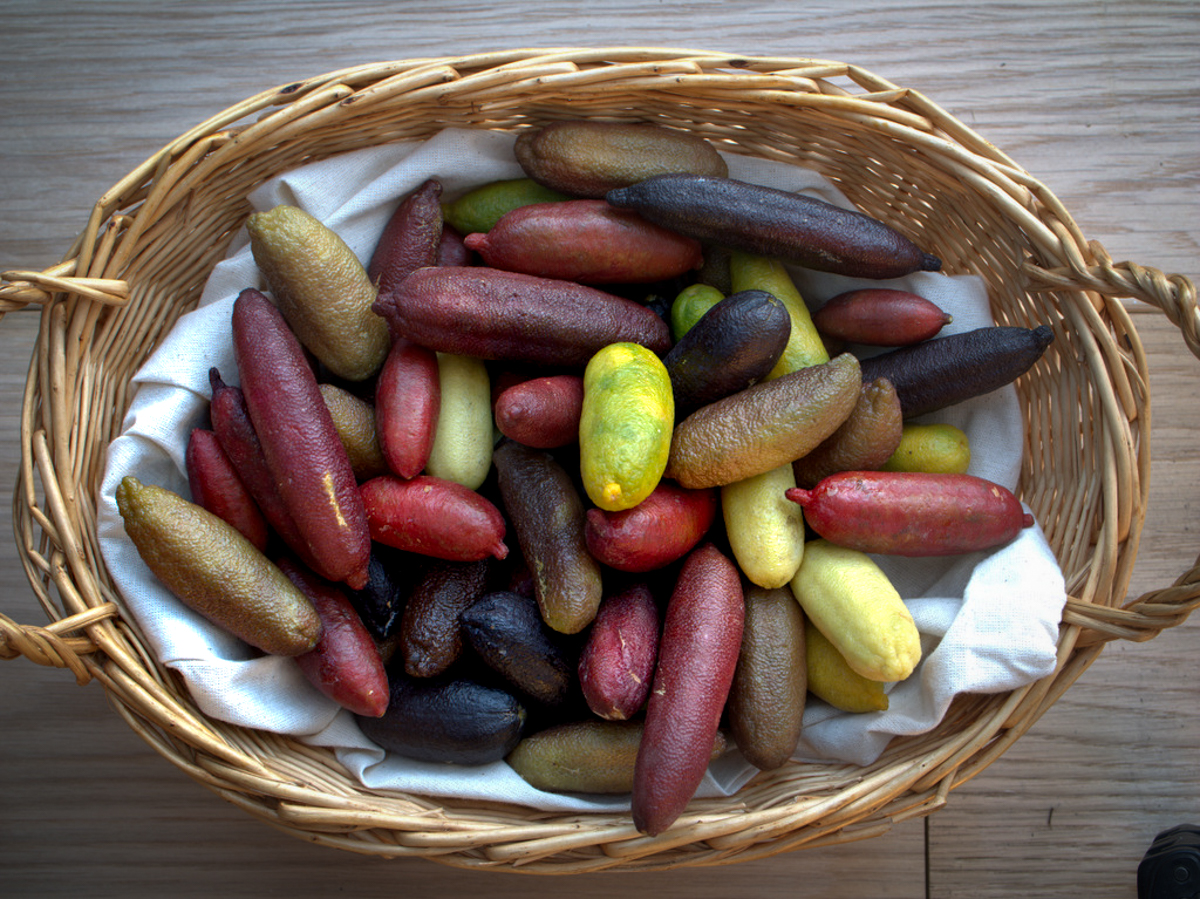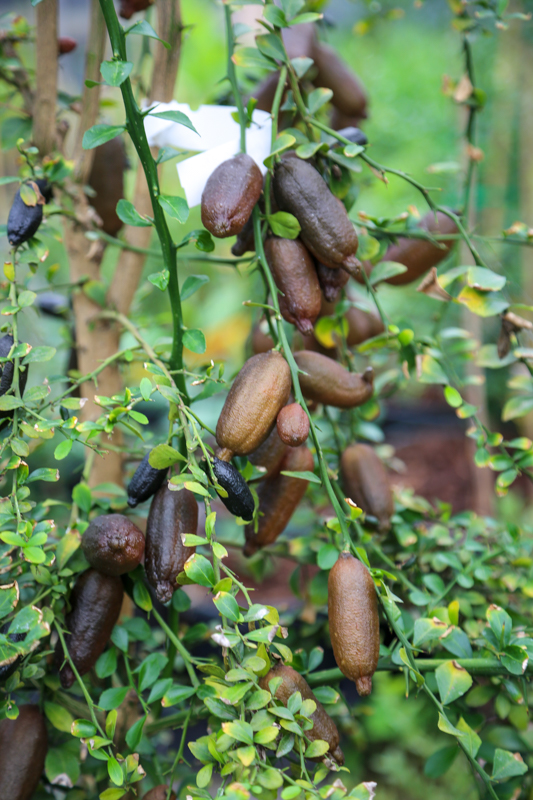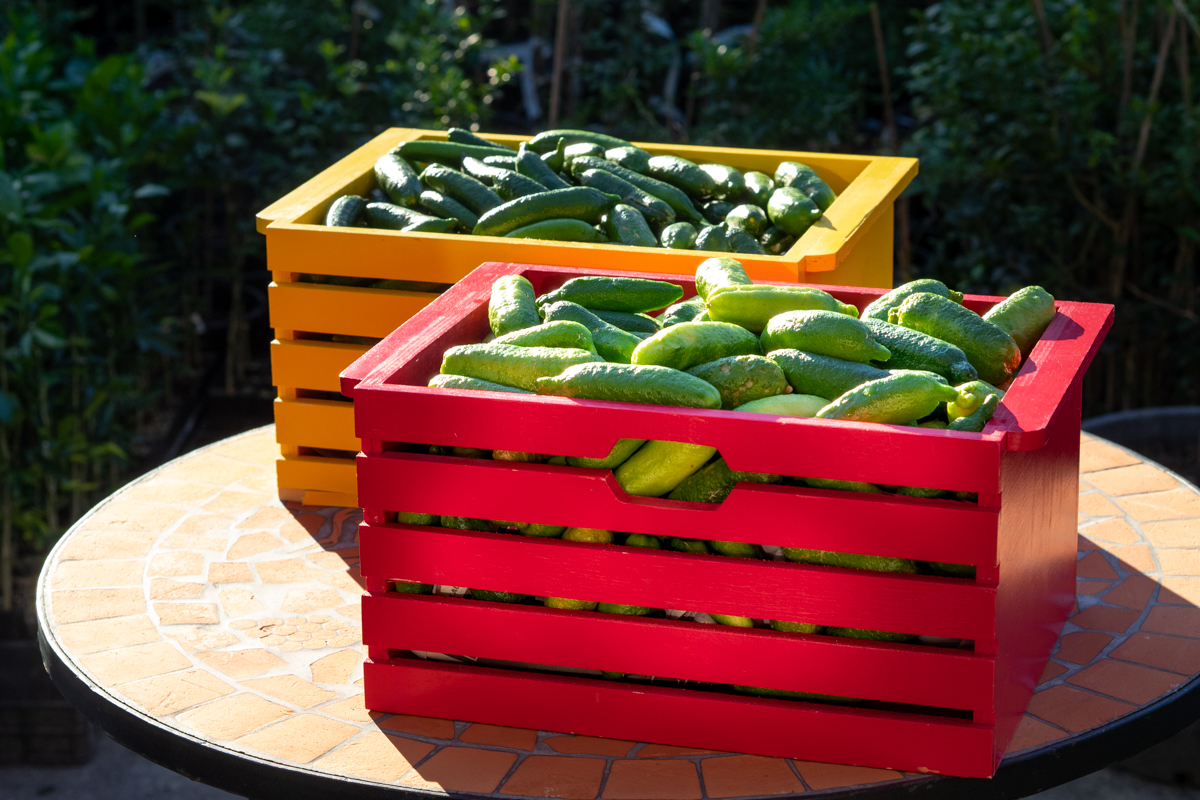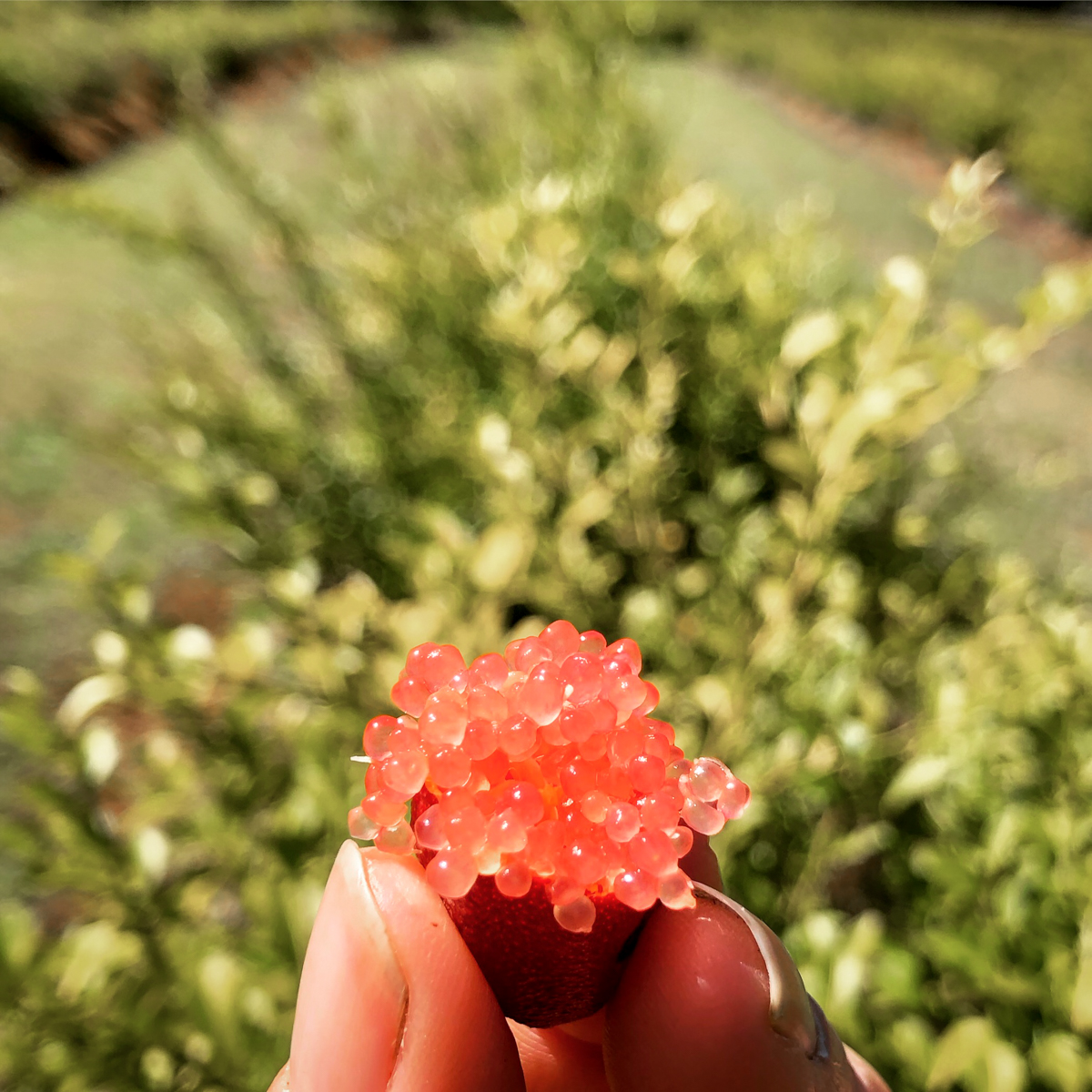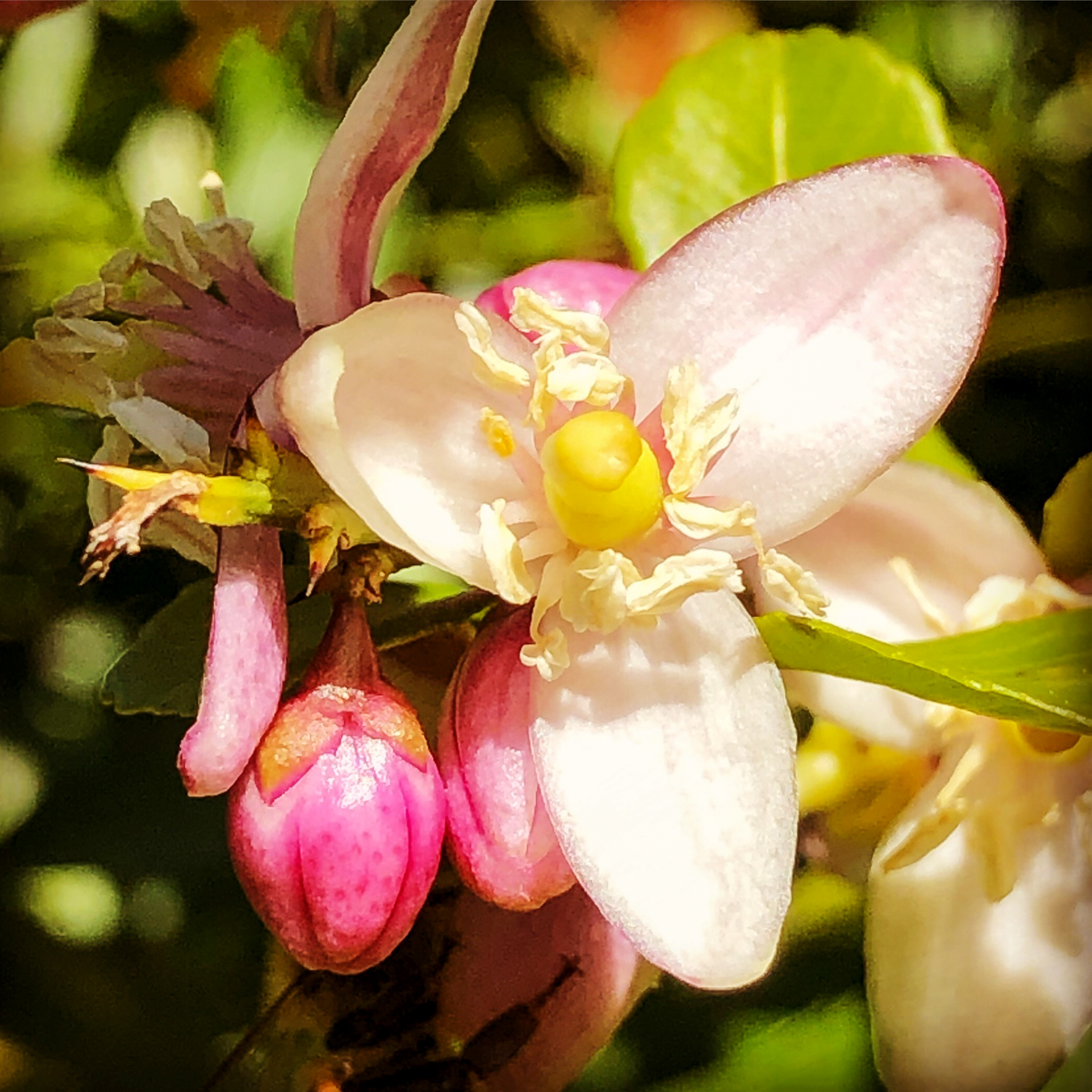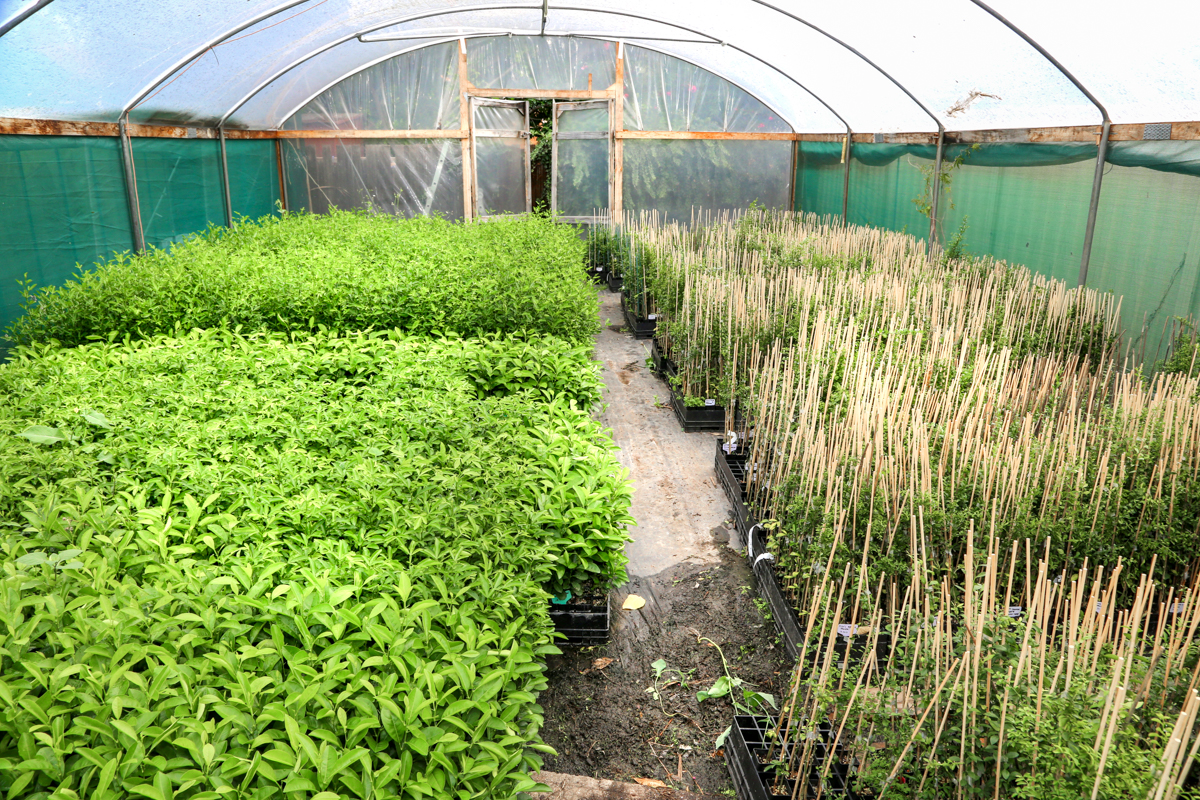Why do you want to grow finger limes?
Why do you want to grow finger limes?
Share
Share

‘Why do you want to grow fingerlimes?’
A story from Chip Saint, ANFA Director
I had only just met my fellow ANFA Director, Vlad, and we were enjoying our first beers together in Melbourne in February when he asked me ‘that’ question. Vlad’s question made me think. Really think. I can’t actually remember what I answered, but I have thought about his question several times since. Before you put a single fingerlime tree in the ground, I would encourage you to try to answer that question.
So why did we (my wife Jo and I) want to grow fingerlimes? We had never thought of growing fingerlimes. As a matter of fact, we had never thought of growing anything on our 20 acre patch in Hampton, SE Queensland. We had owned our property since 2004, but had only had the opportunity to move onto the property in 2017. In our area, about 30 kms north of Toowoomba and at 695 m above sea level, avocados are the main horticultural crop. We had started growing avocados after being encouraged, over a few beers, by our new neighbour. The neighbour, a large avocado grower, packer and marketer, offered his assistance if we were to pursue a life as avocado growers. It was, as they say, a ‘no brainer’. We planted our fist avocado trees at Christmas 2017.
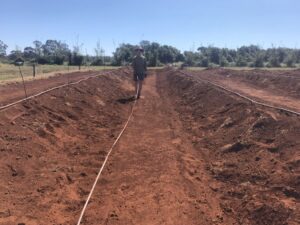
August 2019 – mounding and preparation
We were discussing our avocado venture with an older couple two farms down. Over a few beers (you maybe detecting a theme here…) Bill suggested that we should give fingerlimes a go. Bill knew nothing about fingerlimes but he thought that if we wanted to grow something unique in our area, fingerlimes would be worth investigating. Why not give it a go?

September 2019 – planting
Like all of you, the first thing we did was to tap ‘fingerlimes’ into Google. As all of you have found out, there isn’t a great deal about fingerlimes on the entire World Wide Web. We found out that there were red fingerlimes and green fingerlimes. Perfect we thought as the ‘colours’ of our farm were red and green. Like most people, we also found the NSW DPI Fact sheet (https://www.dpi.nsw.gov.au/__data/assets/pdf_file/0016/320272/growing-australian-native-finger-limes.pdf). There were a few other online resources, but what we thought we really needed to do was to talk to someone in the industry…if only there was a Peak Industry Body for fingerlimes…
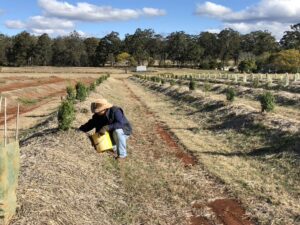
2020
In the absence of ANFA, we approached a large, well-known grower further south to seek advice. Unlike the offers of assistance we received when we started in avocados, nothing was forthcoming from the large grower. As the industry was still in its infancy, this reluctance was understandable. The one piece of advice we did receive was to source quality trees. The recommendation was to approach Eyles Citrus; we did exactly that and we are so glad we did. We settled on D’Emerald and Byron Sunrise trees, all grafted on Troyer rootstock (here’s a selection of citrus rootstock -https://www.dpi.nsw.gov.au/__data/assets/pdf_file/0017/1313711/Selecting-citrus-rootstocks.pdf) . We chose Troyer for two reasons: it was available and because it was cool weather hardy. If you end up deciding you want to grow graft fingerlimes, I encourage you to contact Eyles for trees (https://www.eylescitrus.com.au/). There is a debate as to whether grafted trees or cutting-grown propagated trees are better. That’s hard to tell and if you are undecided, try both. If we plant more trees, we’ll be planting propagated trees sourced from Rosebank Growers (https://www.rosebankgrowers.com.au/pages/home-page)/
Based on the information in the DPI Fact Sheet, we planted our trees on a 5×3 metre pattern (the rows are 5 metres apart and the trees are 3 metres apart) and we irrigate with drip irrigation. We also mounded our trees. The mounding was a technique we took from our avocado growing neighbour. The mounding helps dissipate frost (we receive around a dozen frosts each year at Hampton, one frost measured -6.5 degrees C in 2023) as well as helping mitigate the impact of phytophthora. We have mulched our trees with wheat stubble, hay, forage sorghum and sugar cane. All are OK, although the sugar cane is our least preferred option.
We planted in September 2019, and we took off a small crop in 2021. The crop in 2022 was bigger, and the crops in 2023 and 2024 were bigger still. For the last two years, our fingerlime market has predominantly been to our local distillery. (You can find the gin here https://www.pecheydistilling.com.au/products/toowoomba-dry-gin). As our trees mature and the output increases, we will need to find alternate uses for our product.
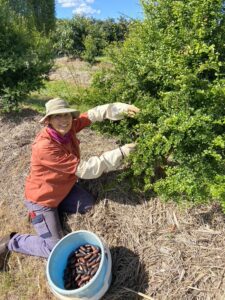
2023
If you are considering growing fingerlimes, work out your market as it will dictate the varieties of fingerlimes you should be growing. ANFA will be dedicating effort to better understand the properties of fingerlime varieties and the best use of each variety.
So if you are sitting down for a beer and are contemplating ‘growing something’ in the future, make sure you ask yourself, ‘why do you want to grow fingerlimes?’ If you decide you do want to grow fingerlimes, and there are plenty of reasons to grow this wonderful Australian native, we’d love for you to share your story. Contact us at info@australianfingerlimealliance.com.au
Chip Saint – Director, ANFA
Disclaimer: This article does not constitute formal ANFA advice. It is, rather, the story of what we did in setting up our orchard. It is offered as a starting point for anyone new to growing fingerlimes or anyone thinking about growing fingerlimes.

